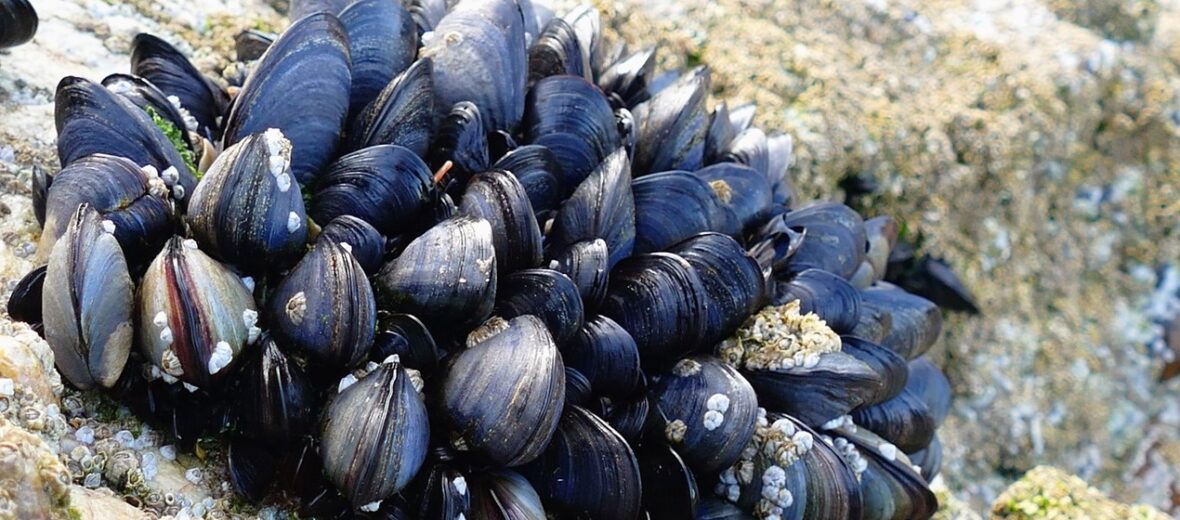
The blue mussel, aka the common mussel, is a filter-feeding, bivalve mollusk that is found in intertidal and shallow, subtidal zones throughout the world. Even though they are subjected to over-fishing and siltation (when water becomes dirty due to fine mineral particles in the water) – as a result of shoreline development – these bivalves are still listed as Least Concern. But their wild numbers are decreasing.
First the Stats…
Scientific name: Mytilus edulis
Weight: Up to 2.1 ounces
Length: Up to 4 inches
Lifespan: Up to 12+ years
Now on to the Facts!
1.) Blue mussels feed by filtering plankton and detritus from the surrounding water.
2.) A group of mussels is called a mussel bed.
3.) The blue mussel is able to successfully handle huge temperature extremes, like freezing and extreme heat.
4.) They combat dehydration during low tide by closing their shells tightly.
5.) These filter feeders can siphon up to 17 gallons of water per day, per mussel.
But wait, there’s more on the blue mussel!
6.) Medical scientists have been working on a mussel-based adhesive to use in eye surgery applications.
7.) Mussels are preyed on by humans, sea stars, dog whelks, and seabirds.
Did you know…?
Their byssal threads (beards) can attach to rock, wood, and even metal!
8.) Humans have been eating mussels for around 20,000 years. They have been cultivating them for about 800 years.
9.) All known mussels are gonochoristic (2 sexes, where each individual organism is either male or female.).
10.) In 2005, China comprised up to 40% of the global mussel catches.
But wait, there’s still more on the blue mussel!
11.) Significant aquaculture operations exist in the northeastern and northwestern United States that raise mussels for food.
12.) Shellfish chitin (the fibrous substance that makes up the exoskeleton of shellfish) is utilized to produce hair care products, moisturizers, and more.
13.) Different from ribbed mussels, blue mussels are not only edible but are regularly harvested in places like Rhode Island.
14.) Blue mussels are broadcast spawners that release sperm and up to 40,000,000 eggs into the water, in the hopes the 2 will meet. Most eggs don’t get fertilized.
15.) Only about 1% of the fertilized eggs reach adulthood.
Now a Short Blue Mussel Video!
Be sure to share & comment below! Also, check out the Critter Science YouTube channel. Videos added frequently!
Want to suggest a critter for me to write about? Let me know here.



